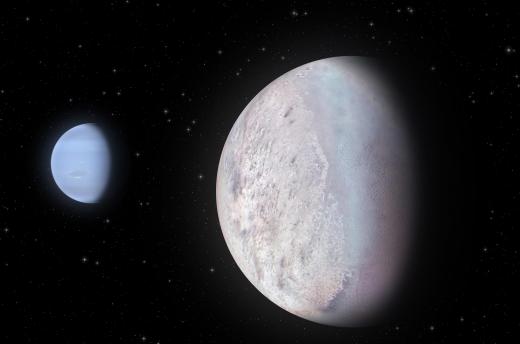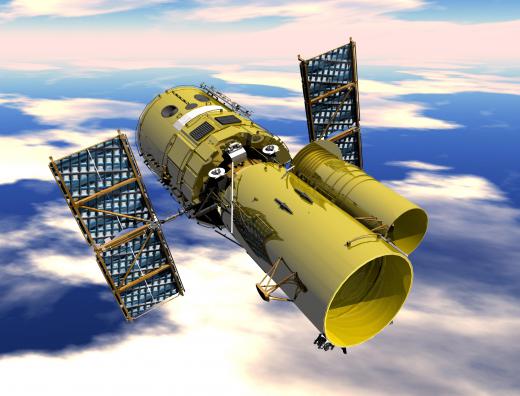What are the Moons of Neptune?
 Michael Anissimov
Michael Anissimov
Neptune, the eighth and last planet from the Sun since the demotion of Pluto in 2006, has 13 known moons. This is about half that of its sister planet Uranus, and a quarter that of Jupiter or Saturn. For its large mass, about 17 times that of Earth, Neptune has relatively few moons. In rough order of decreasing size, the moons are Triton, Proteus, Nereid, Larissa, Galatea, Despina, Thalassa, Naiad, Halimede, Neso, Sao, Laomedeia, and Psamathe.
Triton was the first to be discovered, by William Lassell, who also discovered a moon of Saturn and two of Uranus, in 1854, only seventeen days after the discovery of Neptune itself. Only more than a hundred years later, in 1949, was another moon, Nereid, discovered. Nereid and Triton are named after lesser sea deities, a naming tradition that has persisted with the other moons. This naming scheme is inspired by the fact that Neptune, the Roman god of the sea. Up until 1989, only Triton and Nereid were known, but six were discovered that very year by the Voyager 2 space probe, with the remaining five discovered with ground-based telescopes in either 2002 or 2003.

Neptune only has one moon large enough to be spherical: Triton. At 2700 km (1677 mi) in diameter, Triton is the seventh largest moon in the Solar System, with a size 78% that of Luna. It has characteristics similar to Pluto, with 25% water ice, and the rest rocky material. The largest moon in the Solar System with a retrograde ("backward") orbit, Triton is thought to be a captured Kuiper belt object. The Kuiper belt is the second largest asteroid belt in the Solar System, located beyond the orbit of Neptune. With an average surface temperature of 34 K, Triton is also known as the coldest surface in the Solar System. Unlike many moons in the Solar System, Triton has very few craters and is geologically active, with a smooth, milky surface.

Proteus, the second-largest moon of Neptune with a diameter of 440 km, is shaped like a cube with rounded edges. Scientists think it is about as massive as any body can be before being pulled into a sphere by its own gravity. Mimas, a moon of Saturn, is even less massive but still spherical. Proteus is also known to be one of the darkest surfaces in the Solar System, reflecting only 6% of incoming light.
AS FEATURED ON:
AS FEATURED ON:













Discuss this Article
Post your comments